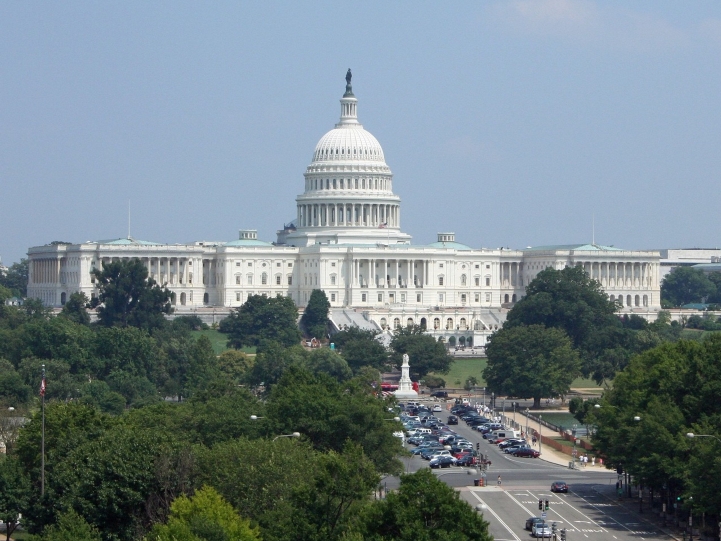
Cannabis Use on Campus: State vs. Federal Legislation Overview
Policy and Advocacy Alcohol and Other Drug
August 3, 2023
Over the past year, the NASPA Research and Policy Institute has received questions from our members about cannabis use on college campuses. This blog post series will dig into this issue to help student affairs administrators better understand cannabis policy in connection to varied state legislation and what they can do to promote a safer campus environment. Look out for topical weekly posts in "the Latest" section of the NASPA website. As a reminder, NASPA is a nonpartisan organization, and this material is published for educational purposes only.
In this text, the reader will learn about:
-
Terminology helpful for reading state legislation for people unfamiliar with the topic
-
Cannabis state legislation
-
Federal legislation and its effect on higher education
Terminology
Cannabis policies vary by state. It is also important to mention that what we call “cannabis” or “marijuana” in common language does not refer to a particular substance, but a group of substances called cannabinoids.
Legislation typically distinguishes cannabinoids into two main categories – medicinal and recreational. There is no significant difference in their chemical composition but, rather, in the way the substance is sold. To purchase medicinal cannabis, a person must first receive a healthcare provider's prescription and the state's approval due to a qualifying health condition. Qualifying conditions, including legal age (18, 19, or 21 years old), vary by state as well. Recreational cannabis refers to usage by any qualified consumer over the age of 21 years old. Even in states where medical and recreational marijuana are both legalized, there are still variations of how cannabinoids can be priced, sold, and bought.
Different state policies can also refer to cannabinoids by their chemical structure, allowing the use of some and prohibiting the use of others, such as delta-9-tetrahydrocannabinol (THC) and cannabidiol (CBD). THC is a psychoactive compound of cannabis, while CBD doesn’t produce a high sensation.
The information in this text is incomplete and limited. To gain a better understanding of the variety and complexity of cannabis legislation, we encourage the reader to learn more about the topic in other resources such as the Alcohol and Drug Foundation website.
State Legislation Overview
In 1996, California became the first state to legalize medicinal marijuana. Since then, 40 other states and the District of Columbia followed California’s lead. As outlined above, legalization policies vary greatly from state-to-state, including in how “medical or medicinal marijuana” is defined and which qualifying conditions and chemical composition that can be regulated. In 2012, Colorado and Washington became the first two states to legalize the recreational use of cannabis following the passage of Amendment 64 and Initiative 502. Today, recreational marijuana is legal in 23 states and the District of Columbia.
States also have different positions on whether and under which conditions marijuana convictions should be expunged, vacated, or sealed from public view, upon legalizing medicinal and recreational cannabis use and sale. NASPA encourages administrators to familiarize themselves not only with cannabis use policies in their states but also expungement rules as they may be an influential factor in student career success and reputation. This is a policy area ripe for additional research and literature review. To learn more, the National Organization for the Reform of Marijuana Laws (NORML) is actively tracking the status of marijuana state laws, including legalization, decriminalization, expungement, drug driving, and medical use policies. The National Conference of State Legislatures has a user-friendly State Cannabis Policy Enactment Database as well.
Federal Law and Institutions’ Responsibilities
Despite the variation of cannabis policies across state lines, the drug remains illegal on college campuses everywhere in the country. Cannabis is defined as a Schedule I drug under federal law. The Public Law 101-226 or Drug-Free Schools and Communities Act (DFSCA) of the Higher Education Act requires institutions of higher education to ban the use of illicit drugs on campus. As long as colleges are receiving federal funding in the form of grants, scholarships, and financial aid, they are subject to compliance with DFSCA.
DFSCA also requires institutions of higher education to conduct a biennial review of their alcohol and other drugs programs, including cannabis, for program effectiveness. DFSCA also requires institutions to review their policies to determine consistency of policy enforcement and to identify and implement any changes necessary. One criticism of this model is that DFSCA does not have a reliable mechanism to ensure compliance and is not often enforced. Therefore inconsistent enforcement among institutions across the country often results in a lack of awareness among student affairs professionals about DFSCA compliance. As part of this blog series, NASPA hopes to prevent members from unintended consequences related to lack of awareness and the inconsistent enforcement of DFSCA. We encourage the reader to get more familiar with the legislation through the guide provided by the U.S. Department of Education.
Although federal legislation prevents institutions from setting their own cannabis-related policies, student affairs administrators and students can work to build education around state legislation and cannabis use, and strategize on ways to build a safer campus environment. In the subsequent blogs in this series, we will dig into the importance of campus-based cannabis education and tools our members can add to their practice to support and protect students.
Did you like this post? Look out for next week's post on the importance of on-campus education regarding cannabis use. Want to see more topical deep dives? We'd love to hear from you! Please fill out this form to let us know about what legislative activity, and topical issues you are most impacted by.